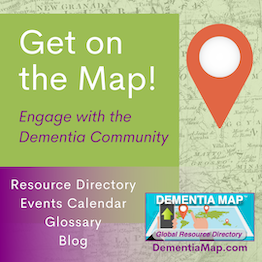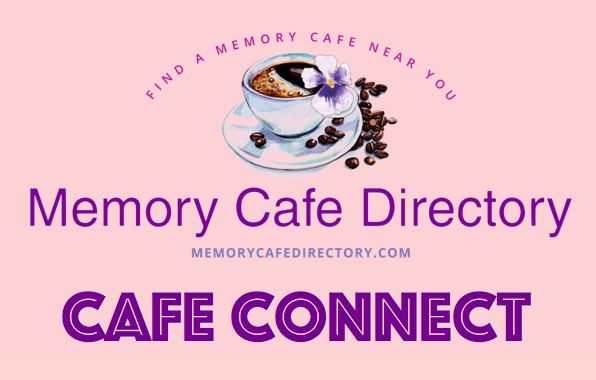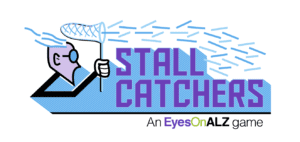Memory Cafe Directory posts and/or links to retailers can be advertising, sponsored, or affiliate links. We may earn a small commission from them. Thank you.
Memory Cafes, initially introduced in 1997, have emerged as vital community spaces that provide support, socialization, and activities for individuals with dementia. These events offer a safe and welcoming place where people with dementia, their loved ones, and caregivers can gather and bond. Memory Cafes provide a range of engagements, such as reminiscence therapy, creative arts, and mental stimulation.
Engagement is essential for dementia care, as it helps individuals maintain cognitive abilities, improve mood, and enhance quality of life. Data from WHO suggest that individuals with dementia who engage in regular mental activities experience a slower decline in abilities than those with limited engagement. Technology has emerged as a valuable tool in innovating these engagements within Memory Cafe settings.
Technology and Memory Cafe Engagement
Integrating technology into Memory Cafe programs has revolutionized how individuals with dementia engage with the world around them. Technology opens new avenues for cognitive stimulation, social interaction, and emotional well-being. By incorporating technology, Memory Cafes can create personalized and immersive experiences tailored to participants’ unique needs.
The advantages of integrating technology into Memory Cafe activities include increased accessibility, improved lifestyle, and enhanced communication. Technology provides opportunities for individuals with dementia to engage with memories, stories, and activities, thus stimulating their cognitive abilities and encouraging active participation. With this in mind, below are five innovations for you to consider using in your Memory Cafe:
Five New Technologies for Memory Cafe Engagement
Technology 1: Virtual Reality (VR)
Virtual Reality (VR) has become an innovative tool in Memory Cafe programs. VR technology immerses individuals in realistic, simulated environments, stimulating memories and promoting social interaction. By transporting participants to familiar places, VR can evoke a sense of nostalgia and trigger conversations that enhance social connections.
Examples of VR applications for Memory Cafe engagement include virtual museum tours, interactive nature experiences, and historical reenactments. These experiences allow individuals with dementia to explore different eras and settings, sparking memories and promoting engagement with fellow participants.
Technology 2: Digital Storytelling Platforms
Digital storytelling platforms provide a medium for preserving personal narratives and fostering meaningful connections within Memory Cafes. By capturing and sharing life stories through images, videos, and audio recordings, these platforms enable individuals to express their identities and histories.
Utilizing digital storytelling can be a transformative experience for individuals with dementia. It allows them to contribute to their community, feel a sense of accomplishment, and maintain a connection with their personal stories. Memory Cafes can incorporate creative tools such as audio or video editor software to organize storytelling sessions and create collaborative projects.
Technology 3: Interactive Touchscreen Displays
Interactive touchscreen displays offer a dynamic and engaging way for individuals with dementia to interact with activities and multimedia content. These displays provide sensory stimulation, encourage exploration, and promote cognitive engagement.
Memory Cafes can utilize interactive touchscreens to offer various activities like puzzles, memory games, and art programs. These activities help improve cognitive abilities, fine motor skills, and hand-eye coordination. Moreover, interactive touchscreen displays can facilitate reminiscence therapy, allowing participants to trigger memories by exploring images, videos, and music from their past.
Technology 4: Ambient Assisted Living (AAL) Systems
Ambient Assisted Living (AAL) systems utilize sensor-based technologies to enhance safety and independence for individuals with dementia. These systems monitor the environment, detect potential risks, and provide timely assistance, ensuring a secure and supportive memory cafe environment.
AAL system features that benefit Memory Cafe participants include fall detection, medication reminders, and location tracking. These features offer peace of mind for participants and caregivers, allowing individuals with dementia to engage in activities without constant supervision. AAL systems also support Memory Cafes in creating a safe, inclusive space that promotes independence and well-being.
Technology 5: Music Therapy Apps and Devices
Music therapy has long been recognized for its positive impact on cognitive stimulation and emotional well-being. With the advancement of technology, music therapy apps and devices have become readily accessible tools for memory cafe engagement.
Music therapy apps and devices in memory cafes can enhance mood, evoke memories, and promote socialization. These tools allow participants to personalize their musical experiences, listen to familiar tunes, and engage in sing-alongs. Music therapy software, like an audio joiner, also provides features like lyric prompts and personalized playlists, allowing customization for individuals with dementia.
Implementing and Maximizing the Impact of New Technologies
Integrating new technologies requires careful reflection. The potential benefits are vast, but maximizing their impact necessitates understanding some considerations and best practices before incorporating them. Below are some of the strategies and approaches needed to implement and maximize the impact of these new technologies successfully.
1Considerations for introducing technology into memory cafes
As Memory Cafes provide valuable social engagement for individuals with dementia, the integration of technology demands careful thought. This section delves into the necessary considerations for introducing technology into memory cafes.
Accessibility and convenience for individuals with dementia
Selecting user-friendly, intuitive, and adaptable technologies for different cognitive abilities is crucial. Clear instructions, simple interfaces, and customizable settings can facilitate independent engagement.
Staff (Caregiver) training and support for incorporating technology effectively
Organizers should provide training programs to memory cafe staff and caregivers to ensure they are proficient in using the technologies. They should also be prepared with the expertise and skills to support participants in utilizing the technology effectively.
2Best practices for integrating new technologies into memory cafe programs
To fully leverage the power of these new technologies, memory cafes must adopt effective integration strategies. This section explores the best practices for seamlessly integrating new technologies into memory cafe programs.
Creating a balance between technology and in-person interactions
While technology enhances engagement, it should not replace the importance of human connections. Memory cafes should maintain a balance by combining technology-based activities with face-to-face interactions and group discussions.
Incorporating participant feedback and adapting technology use accordingly
Regular feedback sessions and surveys can help memory cafes gauge the effectiveness of the technology and make necessary adjustments. Participant input ensures that the technologies used align with their needs and preferences.
Case Studies and Success Stories
AMemory Cafe programs that have successfully integrated new technologies
Several memory cafes have embraced technology to enhance engagement. For example, a Memory Cafe in Philadelphia implemented VR experiences, increasing participation and calming participants with dementia. Memory Cafe 2.0 on the other hand, is a pioneering program that incorporated tablets and interactive apps into their sessions, enabling participants to engage in brain training exercises, memory games, and music experiences.
BInteractive Game Example
As shown in the video below, participants can be seen actively participating and playing an interactive game in the Memory Cafe. This testimonial highlights improved mood, enhanced cognitive abilities, and strengthened social connections, which contribute to a higher quality of life for individuals with dementia.
Concerns and Challenges Associated with Technology Use
While integrating technology into Memory Cafe programs brings numerous benefits, there are valid concerns and challenges. These include potential barriers to accessibility, privacy and security concerns, and the need for ongoing technical support.
Memory Cafes must address these concerns by ensuring appropriate training, implementing privacy measures, and maintaining a supportive environment for participants.
Press Play to Proceed
Technology offers immense potential to enhance engagement and empathy in Memory Cafe programs for individuals with memory loss.
- Virtual Reality
- Digital Storytelling Platforms
- Interactive Touchscreen Displays
- Ambient-Assisted Living Systems
- Music Therapy Apps and Devices
These five technologies explored above empower individuals with dementia to connect with their memories, express their identities and engage with their communities.
By carefully introducing and integrating technology, Memory Cafes can maximize the benefits and possibilities offered by these innovative tools. Memory Cafe organizers must embrace these technologies, considering the personalized needs and preferences of individuals with dementia. By doing so, we can create inclusive and empowering spaces that improve the quality of life for those with dementia.
Let us seize the opportunity to harness the power of technology and make a lasting impact on the dementia caregiving community.





